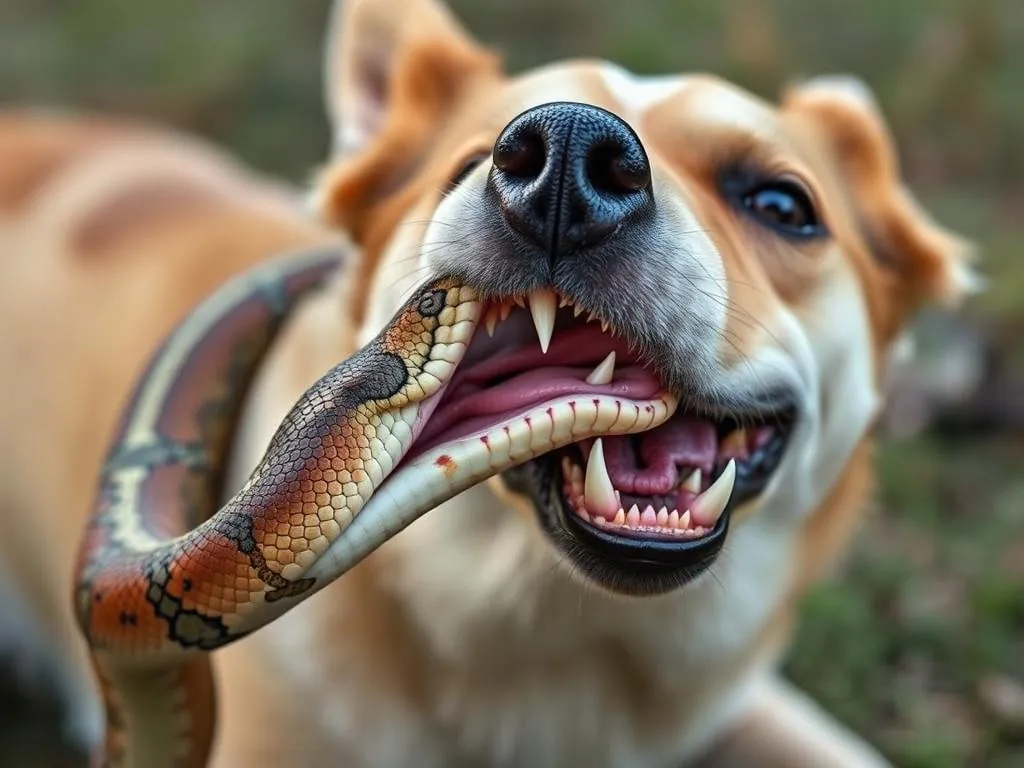
Introduction
Snake bites on dogs can be a frightening experience for pet owners. Understanding the risks, symptoms, and appropriate actions can make a significant difference in ensuring the safety and health of your furry friend. Dogs are naturally curious and often explore their surroundings, putting them at risk of encountering snakes. This article aims to provide a comprehensive overview of snake bites in dogs, including what owners need to know about prevention, symptoms, first aid, and treatment options.
Understanding Snake Bites
What Are Snake Bites?
A snake bite occurs when a snake punctures the skin of an animal (or human) with its fangs. The severity of a snake bite can vary significantly depending on the type of snake, the amount of venom injected, and the location of the bite. Not all snakes are venomous, but many can inflict painful bites that may lead to serious health complications.
In North America, the types of snakes that pose a threat to dogs include:
- Rattlesnakes: Common in western regions, recognizable by their distinctive rattle.
- Copperheads: Found in the eastern United States, known for their copper-colored heads.
- Cottonmouths (Water Moccasins): Typically found in the southeastern U.S., they are semi-aquatic and can be aggressive.
- Coral snakes: Although less common, they are highly venomous and can be found in the southern U.S.
How Snake Bites Occur
Snake bites typically occur when a dog encounters a snake during outdoor activities, such as hiking or playing in the yard. Common scenarios leading to snake bites include:
- Exploring tall grass or brush where snakes may be hiding.
- Investigating under rocks or logs where snakes might be sunning themselves.
- Chasing small animals, which may inadvertently lead a dog to a snake.
Geographic regions where snake bites on dogs are prevalent include areas with warmer climates, especially during the spring and summer months when snakes are most active.
Symptoms of Snake Bites in Dogs
Immediate Symptoms
The symptoms of a snake bite can vary based on the snake species and the amount of venom injected. Immediate symptoms often include:
- Swelling and pain at the bite site: This can occur rapidly, sometimes within minutes.
- Bleeding or oozing from the wound: The bite may bleed profusely, especially if a vein or artery is affected.
Systemic Symptoms
As the venom spreads through the body, systemic symptoms may develop. These can include:
- Changes in behavior: The dog may become lethargic, agitated, or exhibit signs of pain.
- Difficulty breathing or swallowing: This may indicate that the venom is affecting the respiratory system.
- Vomiting or diarrhea: These symptoms can occur as the body reacts to the venom.
Long-Term Effects
Even after immediate treatment, there can be long-term effects from a snake bite. Potential complications include:
- Tissue necrosis: This occurs when the tissue around the bite site dies due to lack of blood flow or severe damage.
- Infection: Bacteria can enter the wound, leading to serious infections if not treated promptly.
- Psychological impacts on the dog: Some dogs may develop anxiety or fear-related behaviors after a snake encounter.
First Aid for Snake Bites
Immediate Actions to Take
If you suspect your dog has been bitten by a snake, the first step is to safely remove the dog from the area. This helps prevent further encounters with the snake. It’s crucial to remain calm, as your demeanor can affect your dog’s stress levels.
First Aid Techniques
Here are some basic first aid techniques to consider:
- Keep the dog still and calm: Movement can increase the spread of venom throughout the body.
- Avoid common myths: Do not cut the wound or attempt to suck out the venom, as these methods can cause more harm than good.
When to Seek Veterinary Care
Certain signs indicate that you should seek immediate veterinary attention:
- Severe swelling: If the swelling is extensive or spreading rapidly.
- Difficulty breathing: Any signs of respiratory distress warrant urgent care.
- Persistent vomiting or diarrhea: This could indicate a severe systemic reaction to the venom.
Timely intervention is critical in improving the prognosis for dogs bitten by snakes.
Veterinary Treatment for Snake Bites
Diagnosis Procedures
Veterinarians diagnose snake bites on dogs through a combination of history taking, physical examination, and diagnostic tests. The steps may include:
- History: Understanding the circumstances of the bite (e.g., where it occurred, what type of snake, etc.).
- Physical examination: Vets will assess the bite site and monitor for systemic symptoms.
- Blood tests: These can help determine the severity of the venom’s effects on the body.
Treatment Options
Treatment for snake bites may include:
- Antivenom therapy: If the snake is venomous, administering antivenom can neutralize the venom and prevent further damage.
- Supportive care: This can involve IV fluids to maintain hydration, pain management, and sometimes antibiotics to prevent infection.
Recovery Process
The recovery process varies depending on the severity of the bite and the individual dog. During recovery, pet owners can expect:
- Monitoring for complications: Vets will typically advise regular check-ins to assess healing.
- Follow-up care: This may include wound care and monitoring for signs of infection or other complications.
Prevention of Snake Bites
Risk Assessment
Preventing snake bites on dogs starts with assessing risk. Identify high-risk areas for dog walks and play, such as:
- Parks with tall grass or dense underbrush
- Areas near water bodies where snakes may be more common
Training and Awareness
Training your dog to avoid snakes is essential. Teach your dog commands like “leave it” or “come,” which can be useful if they encounter a snake. Understanding dog behavior around wildlife can also help keep them safe.
Protective Measures
Consider implementing protective measures, such as:
- Using snake-proof collars and leashes: These can provide an extra layer of safety during walks in high-risk areas.
- Recommendations for outdoor safety: Avoiding tall grass, sticking to clear paths, and keeping a watchful eye on your dog during outdoor excursions can help minimize risks.
Conclusion
Understanding snake bites on dogs is crucial for every pet owner. By being aware of the risks, recognizing symptoms, and knowing how to respond, you can significantly improve your dog’s chances of a positive outcome if a bite occurs. Proactive pet care, training, and awareness play significant roles in keeping dogs safe from potential snake encounters.
Frequently Asked Questions
Can all snakes be harmful to dogs?
Not all snakes are venomous; however, even non-venomous snakes can cause injury through bites. It’s essential to be cautious and educate yourself on the local snake species.
What should I do if I suspect my dog has been bitten?
If you suspect a snake bite, remain calm, move your dog away from the area, and seek veterinary care immediately.
Are there specific breeds more susceptible to snake bites?
While all dogs can be at risk, some breeds with a more adventurous or curious nature may be more prone to encountering snakes.
How can I tell if my dog is recovering from a snake bite?
Signs of recovery include reduced swelling, normal behavior returning, and the dog eating and drinking normally. Follow your vet’s guidance for specific recovery indicators.
What are the costs associated with snake bite treatment?
Treatment costs can vary widely based on the severity of the bite and the required care. Antivenom can be expensive, and additional treatments may add to overall costs. Always consult your veterinarian for an estimate based on your situation.









